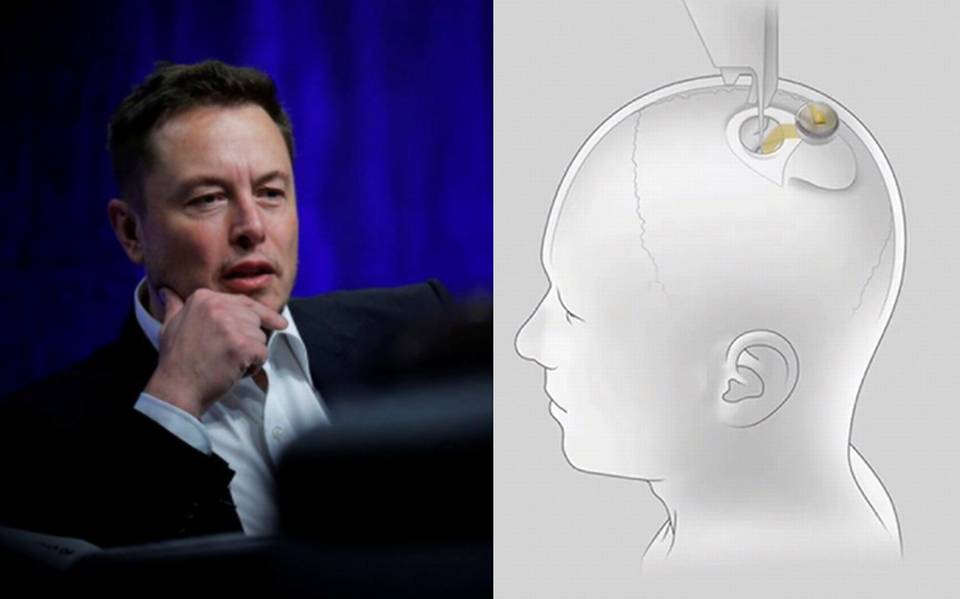02:04:41 pm 09/20/2023
Viewed: 4769
Elon Musk's neuroscience venture, Neuralink, announced on Tuesday that it has secured the green light from an independent ethics board to kick off its inaugural human trials focusing on patients with paralysis. The study aims to assist individuals suffering from cervical spinal cord injuries or amyotrophic lateral sclerosis (ALS).
While Neuralink did not disclose the exact number of participants for the six-year-long study, the company revealed that a specialized robot would perform the surgical implantation of a brain-computer interface (BCI) into the brain area responsible for movement intentions. The initial objective is to empower patients to manipulate a computer cursor or keyboard solely through their thoughts.
Previously, Neuralink had aspired to gain approval for implanting its device in 10 patients but had to renegotiate this figure with the U.S. Food and Drug Administration (FDA) due to safety concerns raised by the agency. The final number of approved participants remains undisclosed.
Musk envisions a broad scope for Neuralink, proposing that its technology could eventually be used to address a range of conditions including obesity, autism, depression, and schizophrenia.
In May, the company announced that it had received FDA clearance for its first human clinical trial. This came even as Neuralink faced federal scrutiny over its animal testing procedures.
While Neuralink did not disclose the exact number of participants for the six-year-long study, the company revealed that a specialized robot would perform the surgical implantation of a brain-computer interface (BCI) into the brain area responsible for movement intentions. The initial objective is to empower patients to manipulate a computer cursor or keyboard solely through their thoughts.
Previously, Neuralink had aspired to gain approval for implanting its device in 10 patients but had to renegotiate this figure with the U.S. Food and Drug Administration (FDA) due to safety concerns raised by the agency. The final number of approved participants remains undisclosed.
Musk envisions a broad scope for Neuralink, proposing that its technology could eventually be used to address a range of conditions including obesity, autism, depression, and schizophrenia.
In May, the company announced that it had received FDA clearance for its first human clinical trial. This came even as Neuralink faced federal scrutiny over its animal testing procedures.
Experts caution that, even if the BCI device proves to be safe for human application, it could take well over a decade for Neuralink to obtain the necessary approvals for commercial use.
How Does the Neuralink Device Work?
The Neuralink device is a brain-computer interface (BCI) designed to establish a direct communication link between the brain and external devices, such as computers. Here's a simplified explanation of how it works:
Surgical Implantation: A specialized robot surgically implants thin, flexible threads containing electrodes into specific regions of the brain. These threads are much finer than a human hair.
Signal Capture: The implanted electrodes pick up electrical signals generated by neurons (brain cells) when they communicate with each other.
Data Transmission: These signals are then transmitted to an external device for processing.
Signal Interpretation: Advanced algorithms interpret the signals to understand the user's intentions, such as moving a limb or typing on a keyboard.
Action Execution: The interpreted signals are converted into commands that control external devices, like moving a computer cursor or operating a robotic arm.
Risks
Surgical Complications: As with any surgical procedure, there's a risk of infection, bleeding, and other complications.
Long-Term Effects: The long-term biocompatibility of the implanted materials is not yet fully understood.
Cybersecurity: The device could be vulnerable to hacking, potentially allowing unauthorized access to sensitive brain data.
Ethical Concerns: There are questions about consent, data privacy, and the potential for misuse of the technology.
FDA Approval: The device is still in experimental stages and has to pass rigorous safety and efficacy tests before it can be commercially available.
Rewards
Mobility Restoration: For paralyzed individuals, the device could restore some form of mobility, such as controlling a computer or even a wheelchair through thought.
Communication: It could provide a new way for people with severe speech or communication impairments to express themselves.
Medical Treatment: The technology has the potential to treat a wide range of neurological disorders, including epilepsy, depression, and even dementia.
Human Augmentation: In the long term, BCIs like Neuralink could pave the way for enhanced cognitive abilities.
Scientific Understanding: The data collected could provide unprecedented insights into brain function, aiding neuroscience research.
It's worth noting that while the technology holds immense promise, it's still in the experimental stage. Extensive clinical trials are needed to fully understand both its capabilities and limitations.
The Neuralink device is a brain-computer interface (BCI) designed to establish a direct communication link between the brain and external devices, such as computers. Here's a simplified explanation of how it works:
Surgical Implantation: A specialized robot surgically implants thin, flexible threads containing electrodes into specific regions of the brain. These threads are much finer than a human hair.
Signal Capture: The implanted electrodes pick up electrical signals generated by neurons (brain cells) when they communicate with each other.
Data Transmission: These signals are then transmitted to an external device for processing.
Signal Interpretation: Advanced algorithms interpret the signals to understand the user's intentions, such as moving a limb or typing on a keyboard.
Action Execution: The interpreted signals are converted into commands that control external devices, like moving a computer cursor or operating a robotic arm.
Risks
Surgical Complications: As with any surgical procedure, there's a risk of infection, bleeding, and other complications.
Long-Term Effects: The long-term biocompatibility of the implanted materials is not yet fully understood.
Cybersecurity: The device could be vulnerable to hacking, potentially allowing unauthorized access to sensitive brain data.
Ethical Concerns: There are questions about consent, data privacy, and the potential for misuse of the technology.
FDA Approval: The device is still in experimental stages and has to pass rigorous safety and efficacy tests before it can be commercially available.
Rewards
Mobility Restoration: For paralyzed individuals, the device could restore some form of mobility, such as controlling a computer or even a wheelchair through thought.
Communication: It could provide a new way for people with severe speech or communication impairments to express themselves.
Medical Treatment: The technology has the potential to treat a wide range of neurological disorders, including epilepsy, depression, and even dementia.
Human Augmentation: In the long term, BCIs like Neuralink could pave the way for enhanced cognitive abilities.
Scientific Understanding: The data collected could provide unprecedented insights into brain function, aiding neuroscience research.
It's worth noting that while the technology holds immense promise, it's still in the experimental stage. Extensive clinical trials are needed to fully understand both its capabilities and limitations.
No video exists.





Comments